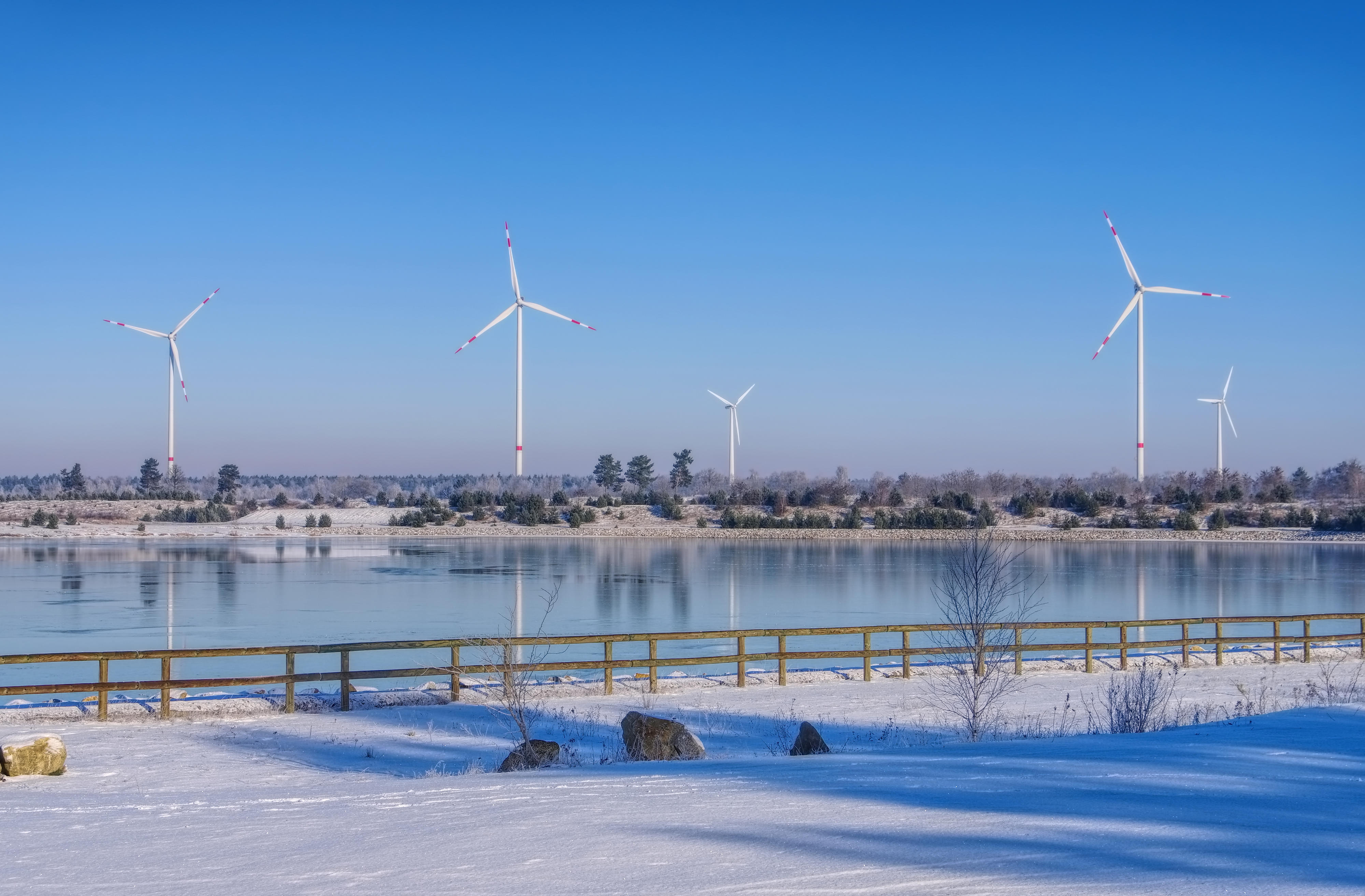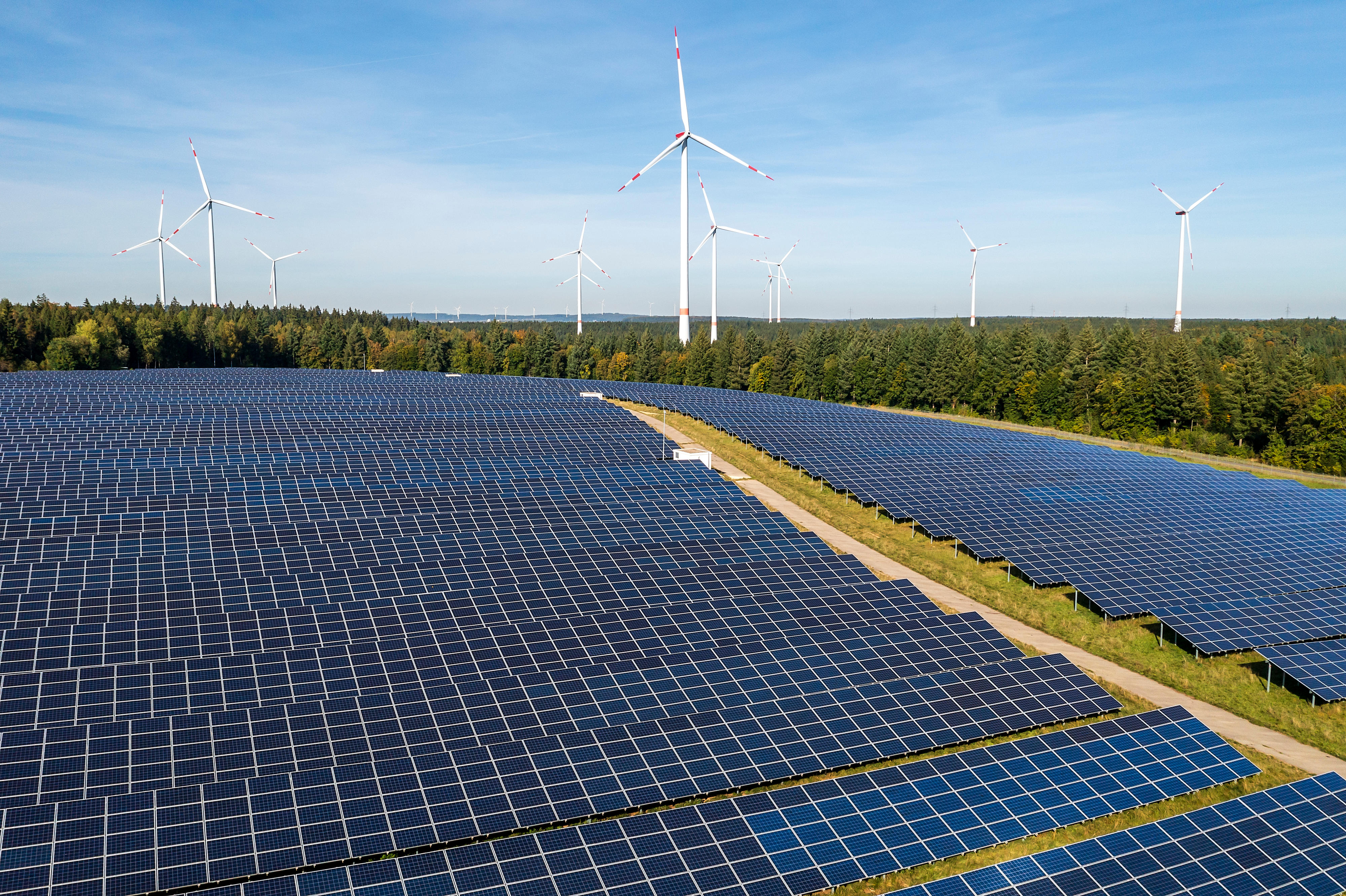Hint: This website is not optimized for your browser version.
Electricity generation in October and November 2019
16 December 2019 - Total electricity generation in Germany in October and November was 5.4% lower compared with a year earlier. While renewable electricity generation was up by 3.3%, conventional generation fell by 10.3%.
Germany's total electricity generation from renewable and conventional energy sources in October and November amounted to 88.8 TWh, 5.4% lower than in the same two months of the previous year. The highest hourly output of 80.8 GWh was produced on Thursday, 28 November, down 0.3% compared with the highest hourly output in the same period a year earlier. The lowest hourly output of 40.4 GWh was on Sunday, 13 October and was around 13.1% below the lowest output in the previous year.
The graph illustrates electricity generation and consumption in the months of October and November. It shows total electricity generation and consumption on each day in the period. The highest hourly output occurred on Thursday, 28 November and the lowest (not visible in detail) on Sunday, 13 October.
Highest and lowest outputs of renewable electricity generation
The majority of renewable electricity supply in Germany comes from wind and solar generation. Wind and solar installations produce their highest output in strong winds and prolonged bright sunshine. Renewables in Germany produced the most electricity on Friday, 11 October. That was the day when high winds reached force 9 on the North Sea coast of Schleswig-Holstein and force 12 (the highest on the Beaufort scale) on the Brocken in the Harz mountains.
Feed-in from renewables (including biomass, hydro and other renewables) consequently reached a peak of 53.9 GWh between 1pm and 2pm. That is more than double the average hourly generation from renewables in October and November (23.7 GWh). Renewables produced their lowest output of 7.5 GWh between 3am and 4am on Wednesday, 20 November.
Wind power made a substantial contribution to electricity generation in both 2018 and 2019, partly due to autumn storms. Feed-in from onshore wind power in the past two months increased to 17.2 TWh, compared to 16.7 TWh a year earlier. Feed-in from offshore wind power increased year-on-year by 12.5% to 4.5 TWh.
From the very beginning of this year (from January up to and including November) wind power plants have been generating more electricity than last year. A total of 108.7 TWh has been produced, which corresponds to an increase of 15.3%. This total includes 87.5 TWh of electricity fed into the grid from onshore wind power plants (an increase of 12.9%). Electricity generation by offshore wind power plants has risen even more in relative terms: a total of 21.2 TWh was fed into the grid, representing an increase of 27%.
In addition to high winds, the continuing expansion of wind power also plays a role. One example is the Arkona wind farm off the coast of Rügen, the most powerful wind farm so far in the Baltic Sea (with a capacity of 385 MW), which went online in April.
While autumn 2018 was sunnier than average, this year's autumn has had more or less average sunshine hours. Feed-in from photovoltaic installations decreased by 11.6% in October and by 10.5% in November compared with the previous year. Seen over the whole year (from January up to and including November), however, photovoltaic feed-in has so far increased by 0.7% from 40.7 TWh in 2018 to 41 TWh this year.
The graph shows the day when renewables produced their highest output. Conventional power plants were adapted to the changes in demand and generation was scaled back. The red line shows consumption.
Highest and lowest outputs of conventional electricity generation
Conventional power plants were, as far as technically feasible and economically reasonable, adapted flexibly to the generation from renewables. Conventional generation recorded its lowest hourly output of 15.5 GWh between 2am and 3am on Sunday, 27 October. Conventional plants produced their highest hourly output of 58.2 GWh between 5pm and 6pm on Monday, 25 November, when renewables generated barely 8.9 GWh.

